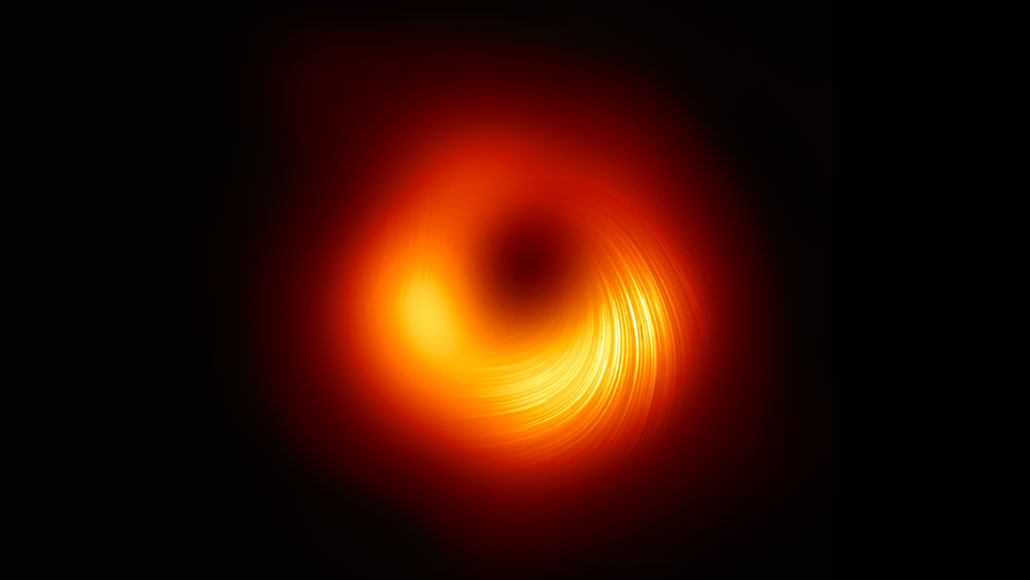
A new Event Horizon Telescope image of the galaxy M87’s black hole (pictured) traces the polarization (bright lines), or orientation, of light waves emitted by material swirling around the black hole. That polarization is related to the black hole’s magnetic fields.
EHT collaboration







